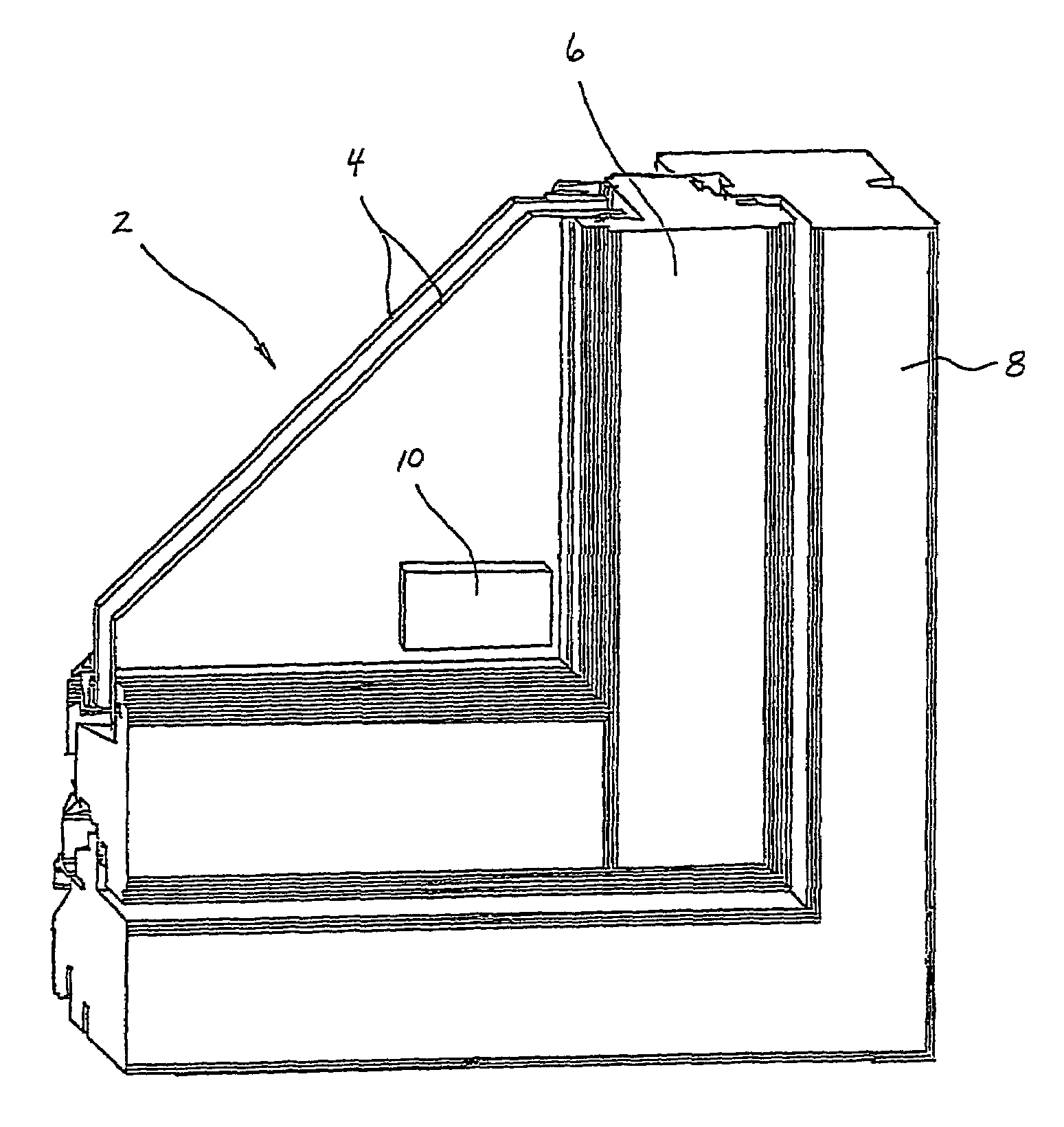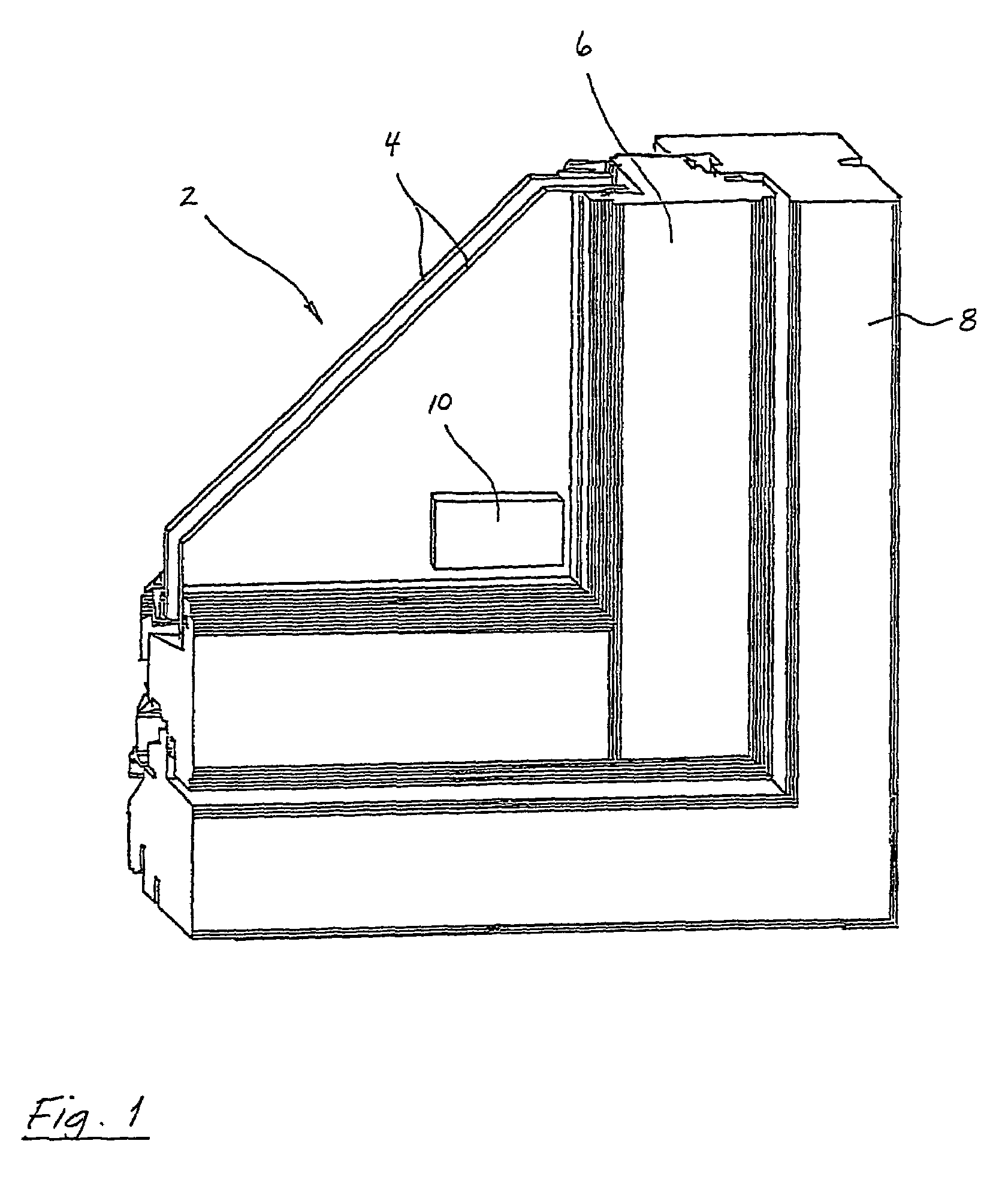Alarm chip and use of the alarm chip
a technology of alarm chip and alarm chip, which is applied in the field of alarm chip, can solve the problems of inability to use the alarm chip, inconvenient use, and inability to meet the needs of the user, and achieve the effects of reducing the cost of use, and improving the safety of users
- Summary
- Abstract
- Description
- Claims
- Application Information
AI Technical Summary
Benefits of technology
Problems solved by technology
Method used
Image
Examples
Embodiment Construction
[0039]The appended drawn figure (FIG. 1) shows a perspective sectional view of a window 2 formed by double window glass 4 mounted in a window frame 6, the window frame 6 being disposed in an associated window casing 8 of a building not shown. Internally, the window glass 4 has an alarm chip 10 according to the invention attached thereto. The alarm chip 10 is provided with an accelerometer, not shown in the drawn figure, an ASIC electronic signal processing circuit not shown, incorporating i.a. an analogue-to-digital converter (ADC-component) and an electronic processor for processing digital acceleration data from the accelerometer. The alarm chip 10 is moreover provided with a radio frequency transmitter (RE transmitter) not shown, and a lithium battery, not shown, providing the alarm chip 10 with electrical power. The ASIC is arranged with software in the form of suitable algorithms, e.g. seismology-based algorithms, continuously processing incoming acceleration data produced by p...
PUM
 Login to View More
Login to View More Abstract
Description
Claims
Application Information
 Login to View More
Login to View More - R&D
- Intellectual Property
- Life Sciences
- Materials
- Tech Scout
- Unparalleled Data Quality
- Higher Quality Content
- 60% Fewer Hallucinations
Browse by: Latest US Patents, China's latest patents, Technical Efficacy Thesaurus, Application Domain, Technology Topic, Popular Technical Reports.
© 2025 PatSnap. All rights reserved.Legal|Privacy policy|Modern Slavery Act Transparency Statement|Sitemap|About US| Contact US: help@patsnap.com


